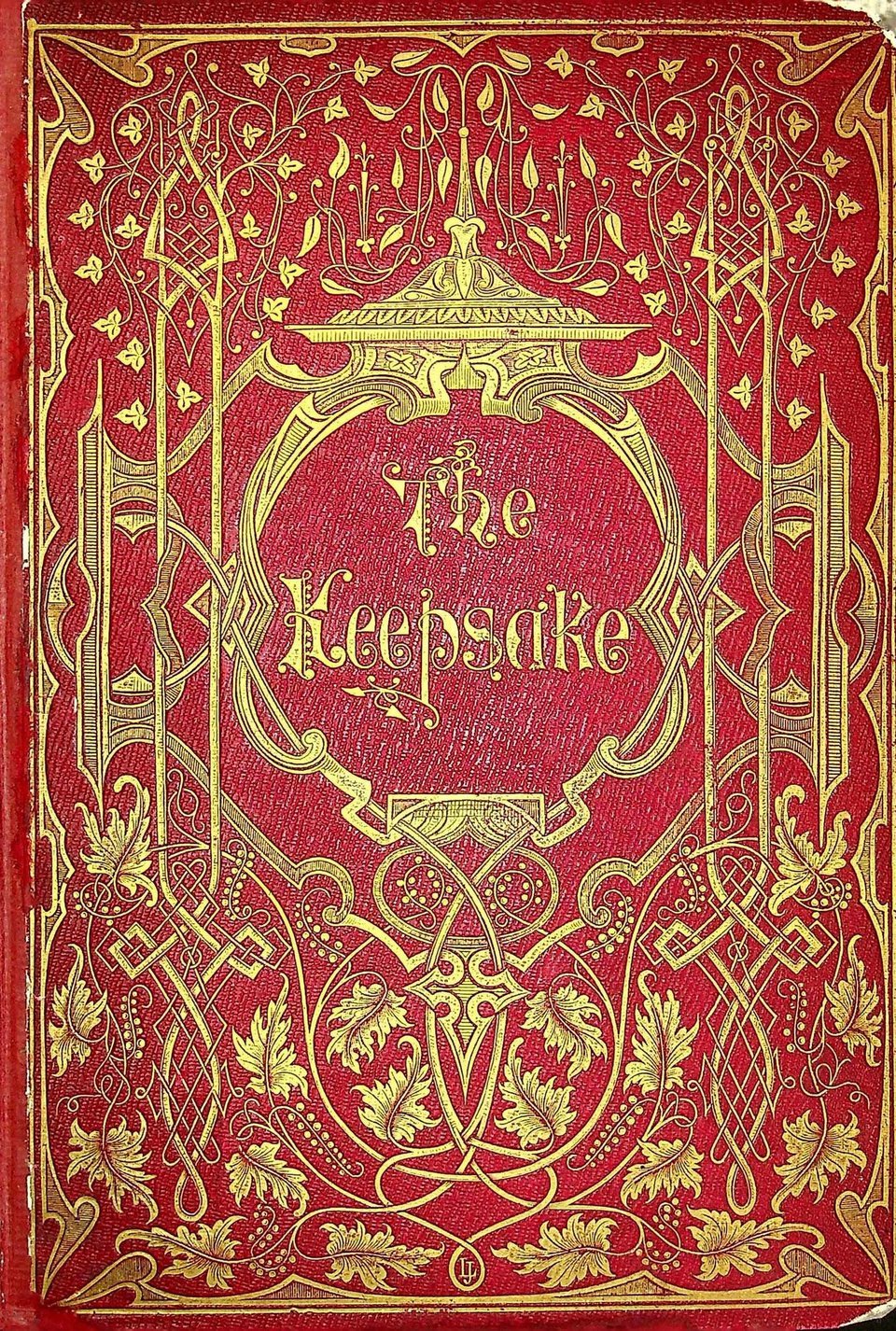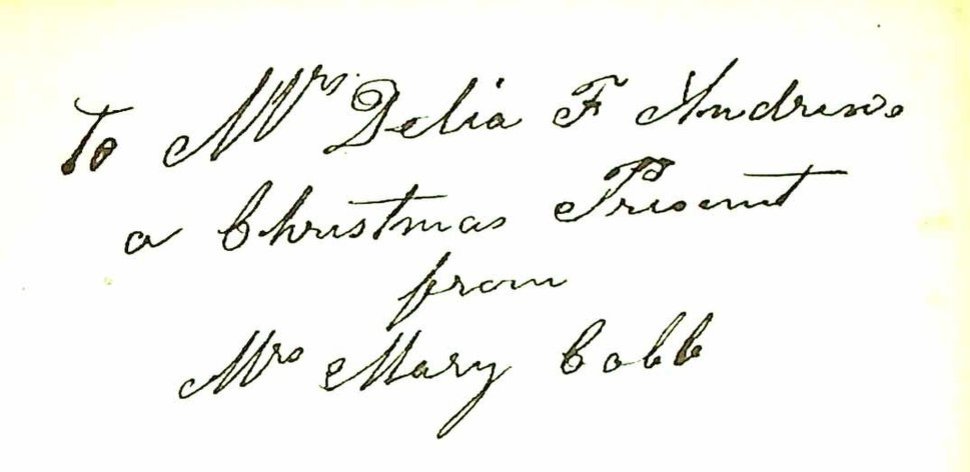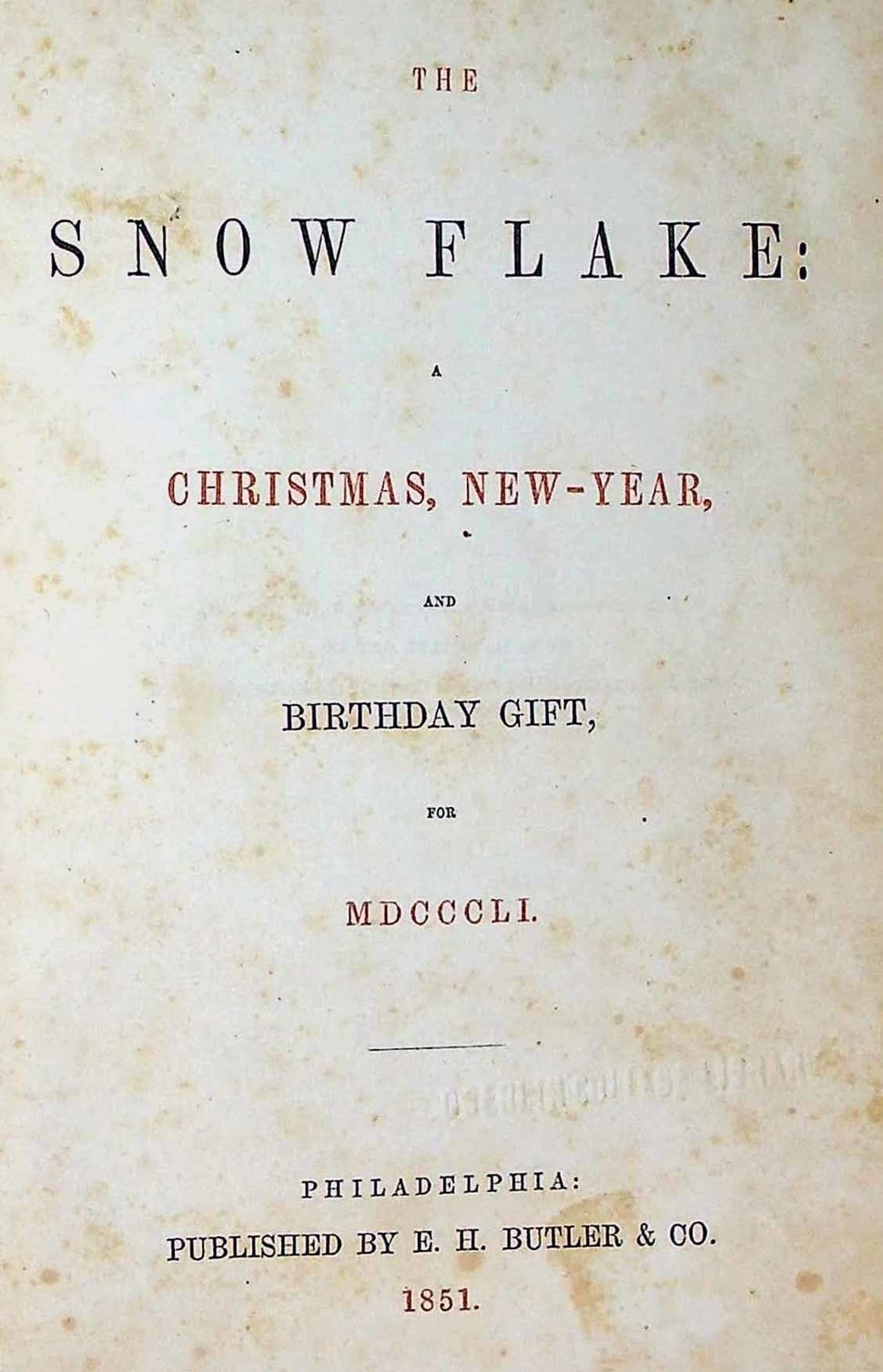Historical Context
Gift books, or gift annuals, were typically published on gilt decorated covers which, along with some high quality etchings gave the appearance of handcrafted luxury and expensive taste.
However, gift books were in fact an early example of an affordable, mass produced book that fed the interests of a socially aspiring middle class, which coveted their own portion of fashionable literary luxury.

Cover design for The Keepsake 1857.

Gift inscription taken from the fly leaf of "Select Poems by Mrs. L. H. Sigourney" (1849)
Gift annuals emerged first in England of the early 1820s near the beginning of the mass production of books, and were so successful that many publishers began to issue them by the thousands. So impressive were gift book sales, that the profits to be made outstripped the sales of individual books of poetry by a wide margin. Poets, short story writers, and engravers vied to gain commissions and exposure in these meticulously curated collections.
We can see in the illustration above - that a related book of poetry by the frequently anthologized poet L. H. Sigourney (who also edited gift annuals herself) was likewise fashionable as a gift at Christmas. So popular and lucrative was the gift book genre that socially progressive organizations such as those devoted to anti-slavery, missionary work, and the temperance movement, issued their own compendiums to capitalize on this combination of moral improvement, performative virtue, and entrepreneurship. Gift annuals helped to feed the swelling public desire for gift giving around Christmas and other special occasions like birthdays, which fortunately for vendors, renewed annually.
Historical book collections by and about women that serve the interests of the modern curriculum are scarce, and the fact that this collection came about organically as these books were saved and finally passed on by local donors speaks to their legitimate character and value. These books are vestiges of the evolution of a separate sphere for women in print media.
If we are read these annuals as the women of that time read them, we should appreciate that these collections must have offered an opportunity for private escape, and a sense of cultural refinement. To view these gift annuals instead, as other have, as frivolous, ephemeral, warmed-over Romanticism or cloying sentimentality, is unfair to both their good selection of content and the quality illustrations.

Title page for "The Snow Flake" in 1851




